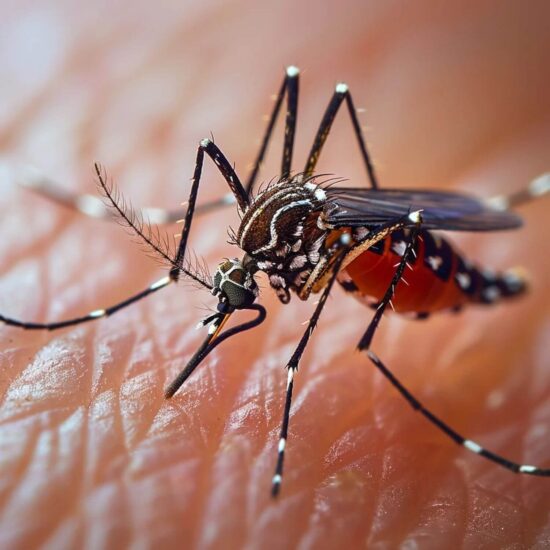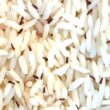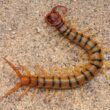Nothing ruins a perfect summer evening like getting attacked by mosquitoes. These tiny buzzing pests aren’t just annoying, they’re actually the deadliest threat to humans worldwide, causing an estimated 2.7 million deaths per year from diseases like West Nile virus, Zika, and malaria.
If you’re tired of slapping mosquitoes and dousing yourself in bug spray, you might be wondering: are there states with no mosquitoes or at least places in America where these pests just aren’t a problem?
The good news is yes! The best states for low mosquitoes have natural conditions that keep mosquito populations very low. Whether you’re planning a move to avoid mosquitoes, choosing a vacation spot, or just curious about where these pesky bugs thrive, this list will show you exactly which states have the fewest mosquitoes and where to go to escape the buzz.
Why Some States Have Fewer Mosquitoes Than Others
Before diving into the states with the least mosquitoes, it helps to understand what mosquitoes actually need to survive. Understanding these factors explains why certain states with no bugs become natural mosquito-free havens.
Temperature matters a lot. Mosquitoes require a temperature between 50 and 80 degrees Fahrenheit to survive, though some tough species can handle slightly cooler weather. When it gets too hot or too cold, mosquito populations crash.
- 4200V electric grid zaps mosquitoes, flies, moths, and gnats fast
- Covers up to ½ acre—great for patios, gardens, and camping
- Chemical-free pest control, safe around pets and kids
- Easy setup with hanging loop, removable tray, and replaceable bulb
Water is everything. Here’s a scary fact: mosquitoes can breed in as little as one tablespoon of water. They need standing water to lay their eggs, which then turn into those annoying adults in just days or weeks. No water sources means no baby mosquitoes.
Humidity plays a huge role. Scientists define “mosquito days” as days with an average humidity of at least 42 percent and temperatures between 50 and 95 degrees Fahrenheit. Dry air makes it much harder for mosquitoes to survive and reproduce.
Wind helps too. Even a light breeze can make mosquitoes struggle to fly and find targets. That’s why breezy coastal areas and windy plains often have fewer problems with these pests.
Unfortunately, climate change is making things worse for most of the country. Over the past four decades, more than two-thirds of the country has seen an increase in “mosquito days” due to rising temperatures and changing weather patterns.
The Top 10 Best States for No Mosquitoes
If you’re looking for states with fewest mosquitoes, these top-ranked locations provide the best mosquito-free living in America. Each of these states with low mosquito populations has unique geographic and climatic advantages that make them ideal for people wanting to escape these pests.
1. Nevada
Nevada takes the crown as the most mosquito-free state in America and consistently ranks as one of the best states for no mosquitoes. Nevada is the driest state in America. With an average of just 9 inches of rain a year across the state, Nevada gets less than an inch of rain each month.
The secret to Nevada’s success as one of the top states with no bugs is its position in the “rain shadow” of the Sierra Nevada mountains. These tall peaks block moisture from reaching most of the state, creating desert conditions that mosquitoes absolutely hate. Las Vegas has only 36% humidity, making it one of the driest cities in the U.S.
Best areas: Las Vegas, Reno, and pretty much anywhere in central or southern Nevada.
The catch: Summer temperatures can be brutal, often exceeding 100°F. Also, water is scarce and expensive.
2. Alaska
It might seem weird to put Alaska on this list, but hear this out. While Alaska does have mosquitoes, they’re only a problem for a very short time. Mosquito season begins in late May or early June and ends in late August or early September, and even then, many areas stay relatively bug-free.
Alaska has 35 species of mosquito, and all but a few will be more than happy to nibble on humans. But mosquitoes are only really an issue for Alaska visitors from the second week in June to the last week in July.
The key is location within Alaska. Cities like Anchorage and areas along the coastline or in the mountains tend to be relatively mosquito-free thanks to constant breezes and cooler temperatures.
Best areas: Anchorage, coastal towns, and mountain regions.
The catch: Winters are long and harsh, and some wilderness areas can still be buggy during peak summer.
3. Utah
Utah’s combination of high elevation and desert climate creates tough conditions for mosquitoes. The state gets only about 13.6 inches of rain per year, and much of that falls as snow in the mountains.
- 4200V electric grid zaps mosquitoes, flies, moths, and gnats fast
- Covers up to ½ acre—great for patios, gardens, and camping
- Chemical-free pest control, safe around pets and kids
- Easy setup with hanging loop, removable tray, and replaceable bulb
The high altitude across most of Utah means cooler temperatures and lower humidity, both of which mosquitoes struggle with. The desert regions in southern Utah are particularly mosquito-free.
Best areas: Salt Lake Valley, southern Utah desert regions, and higher elevation areas.
The catch: Some mountain areas near lakes can have seasonal mosquito activity during snowmelt.
4. Wyoming
Wyoming’s climate is generally semi-arid and continental and is drier and windier in comparison to most of the United States. This combination of dry air and persistent wind makes life very difficult for mosquitoes.
Wyoming sits at high elevation across the entire state, which naturally reduces temperatures and humidity. The constant wind that gives Wyoming its reputation for being blustery also keeps mosquitoes from flying around effectively.
Best areas: Eastern plains, Cheyenne, and most urban areas.
The catch: Areas near rivers or lakes can still have some mosquito activity during summer.
5. Arizona
Arizona consistently ranks among the best states for low mosquitoes and is the least humid state in the US, with an average annual relative humidity of just 40.4%. The state is famous for its “dry heat,” and that lack of moisture makes it nearly impossible for mosquitoes to thrive, cementing its place as one of the top mosquito-free states.
Arizona totals 12.61 inches of rainfall per year, less than one inch per month. Most of this rain comes during the brief monsoon season, but it evaporates quickly in the desert heat.
Interestingly, Arizona’s extreme summer heat can actually work against mosquitoes. When temperatures regularly exceed 95°F, it pushes mosquitoes past their comfort zone.
Best areas: Phoenix metro area, Tucson, and most desert regions.
The catch: Higher elevation areas like Flagstaff can have more mosquito activity, and the summer monsoon season can temporarily boost populations.
6. Colorado
Colorado’s high elevation creates natural mosquito protection across most of the state. The average elevation is over 6,800 feet, which means cooler temperatures and thinner air that mosquitoes don’t like.
Colorado: The only state in this list that doesn’t border an ocean is Colorado. This state’s elevation creates a dry and arid climate. You will still get bitten by mosquitoes, though, as they get active around dusk for a few short months in the summer.
Best areas: Denver metro area, Colorado Springs, and the eastern plains.
The catch: Mountain wilderness areas, especially those with lakes and streams, can have significant mosquito populations during snowmelt season.
7. West Virginia
This one might shock you, but according to the American Mosquito Control Association, West Virginia has the fewest mosquito species (26), while Texas has the most (85). West Virginia’s mountainous terrain and elevation help keep mosquito numbers low.
The state’s position in the Appalachian Mountains creates conditions that aren’t ideal for mosquito breeding, even though it gets more rainfall than western states.
Best areas: Higher elevation areas and the eastern panhandle.
The catch: River valleys and lower elevation areas can still have mosquito problems during summer.
8. Montana
Montana makes the list because of its continental climate and relatively short summer season. Montana’s peak season lasts from May to September, but the high elevation and cool temperatures keep populations lower than in warmer states.
The eastern plains of Montana are particularly good for avoiding mosquitoes, while the mountain regions can have seasonal issues.
Best areas: Eastern Montana plains and higher elevation valleys.
The catch: Areas near rivers, lakes, and during snowmelt can have temporary mosquito surges.
9. Idaho
Idaho’s diverse geography means mosquito populations vary widely across the state. The southern desert regions around the Snake River Plain stay relatively dry and mosquito-free, while northern Idaho can have more issues due to forests and water sources.
Best areas: Snake River Plain, Boise area, and southern desert regions.
The catch: Northern Idaho’s forests and the areas around irrigation can have more mosquito activity.
10. Michigan
- 4200V electric grid zaps mosquitoes, flies, moths, and gnats fast
- Covers up to ½ acre—great for patios, gardens, and camping
- Chemical-free pest control, safe around pets and kids
- Easy setup with hanging loop, removable tray, and replaceable bulb
Here’s the biggest surprise on this list. Despite being in a region known for mosquitoes, Michigan earned this title based on its mild summer temperatures, low summer rainfall, a limited number of mosquito species, and lack of West Nile cases throughout the state.
Michigan’s unique position surrounded by the Great Lakes creates a moderated climate that keeps mosquito populations in check, especially near the shorelines.
Best areas: Great Lakes shorelines and urban areas like Detroit and Grand Rapids.
The catch: Inland wetlands, forests, and areas away from the lakes can still have mosquito problems.
Pacific Northwest Coast: An Honorable Mention
While Washington and Oregon don’t make the top 10 statewide, their coastal regions deserve special mention. West of the Cascades, in the Seattle area, for example, they really don’t have a West Nile problem.
The constant ocean breezes and moderate temperatures along the Pacific coast create conditions that mosquitoes struggle with. The lack of bugs is one of the many reasons I love living in the Pacific Northwest, as one local resident noted.
Best areas: Seattle, Portland, and other coastal cities.
The catch: Head inland, especially east of the Cascade Mountains, and mosquito problems increase significantly.
What Makes These States With No Mosquitoes Work
Several geographic and climatic factors combine to create the best mosquito-free zones in America. Understanding these factors helps explain why these states have the least bugs and lowest mosquito populations:
High elevation naturally reduces temperatures and humidity while creating challenging conditions for mosquitoes to survive and reproduce.
Desert climates provide the ultimate mosquito protection. With minimal rainfall and rapid evaporation, there simply aren’t enough water sources for mosquitoes to breed.
Persistent winds make it difficult for mosquitoes to fly and find victims. Even light breezes can significantly reduce mosquito activity.
Extreme temperatures can work both ways. Very cold winters kill off mosquito populations, while extremely hot summers can push mosquitoes beyond their survival limits.
Rain shadow effects occur when mountain ranges block moisture from reaching certain areas, creating dry zones that mosquitoes can’t tolerate.
The Climate Change Factor
Unfortunately, mosquito patterns are changing as the planet warms. The Northeast, which has warmed faster than the rest of the country, experienced the biggest increase in mosquito days.
However, there’s some good news for hot, dry areas. Mosquito season shortened in hotter regions such as Texas, which experienced more frequent temperatures exceeding 95 degrees, pushing mosquitoes past their physiological limits.
This means that while some northern areas might see more mosquitoes in the future, the desert Southwest could actually become even more mosquito-free as temperatures rise.



